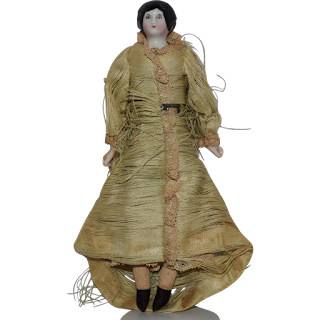A marvelous and unique dress collected from the Southern Cheyenne at the turn of the century, this dress was made well before World War I as the dates of the coins attest (the coins date from 1894 through 1909). Of typical Cheyenne construction from English selvage edged stroud cloth, it features the slightly longer drop side panels. The dress neckline is also edged in red military wool braid which is further beaded in simple white beading. Also present are decorative edging done in early brass sequins. The American coins which are attached are in lieu of the more typical elk teeth and represent a "modern" adaptation to a more ancient style. The dress has a few very minor moth holes and shows a slight amount of fading here and there but none of this detracts from the over all power of the dress itself. Collected with the dress at that time and sold along with it is the 3" wide native made German silver (which is a base metal) and brass studded concho belt made from the belly strap of a McClellan cavalry saddle. The belt is absolutely gorgeous and although a bit stiff is still reasonably supple and has retained its original leather fasteners and cavalry buckles. A wonderful piece!
------------------------------------------------------------------------------------------------------------
------------------------------------------------------------------------------------------------------------
























